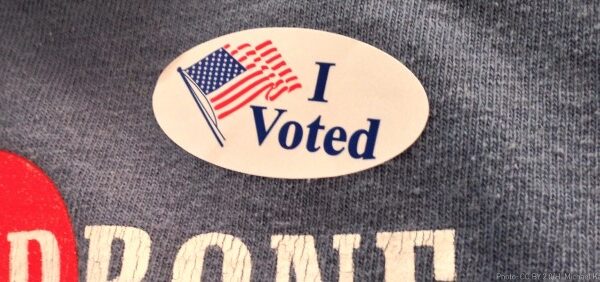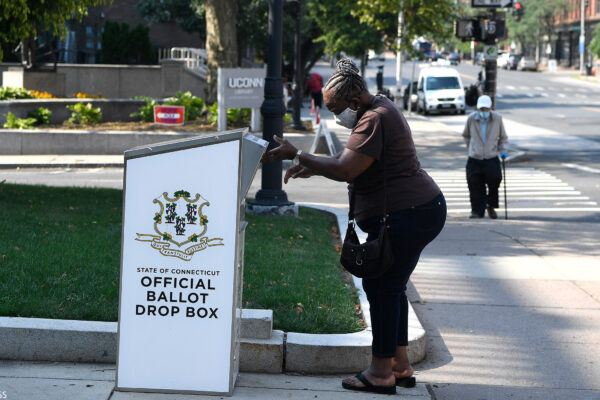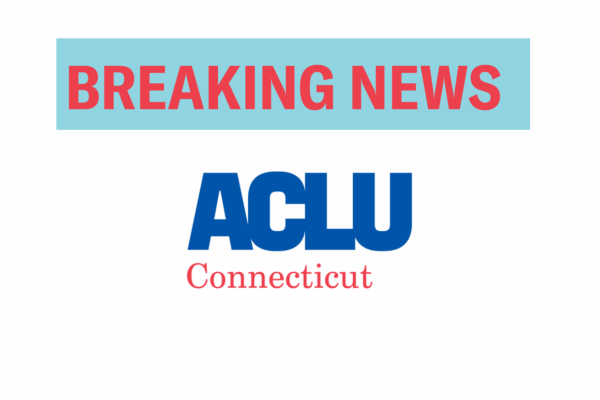Right now, Connecticut is one of only four states without in-person early voting. But in 2022, Connecticut voters overwhelmingly voted to change that.
Now, the legislature will decide what early voting here will look like, including when, where, and for how long early voting will be available before an election.
When it comes to early voting, Connecticut has been behind. But now, our state has a chance to be a leader in creating an accessible, inclusive early voting system, and the legislature must make that happen.
Connecticut voters want and need inclusive, expansive early voting that makes voting more accessible for every voter, especially voters who already face the biggest barriers to the ballot box.
To make that vision a reality, the legislature must pass an early voting bill that allows at least 14 days of early voting in the 30 days before Election Day, including at least one Saturday and one Sunday, with consistent hours that include those outside of a 9-5 work schedule, and equitable distribution of locations.
At least 14 days of early voting in the 30 days before Election Day
Connecticut voters are busy. For many voters, getting to the polls on a single Tuesday in November is difficult, if not impossible. Because of systemic racism and other interlocking forms of oppression, this is especially true for voters of color, women, disabled voters, elderly voters, working voters, parents, and LGBTQ+ voters.
Our early voting system needs to include at least 14 days of early voting in the 30 days before Election Day, so voters have the flexibility to get to the polls on days that work for us, and to ease the pressure of long lines and crowding for election workers and voters alike.
This is a reasonable, commonsense number of days, and legislators should see it as the minimum. After all, among the 46 other states that have have early voting, the average number of early voting days is 23, with the largest clocking in at 46. Among the 46 other states that have early voting, the average start date for early voting is 30 days before Election Day.
The lowest number of early voting days, currently, is three – which means Connecticut politicians who have proposed only two days of early voting here are arguing for our state to remain at the bottom when it comes to early voting access.
The majority of states with lower numbers of early voting days also often have more expansive forms of absentee balloting available compared to Connecticut. We do not have no-excuse absentee voting as an option for all voters, so any proposals looking at fewer early voting days would also mean more stress on election workers and voters.
Fewer early voting days could mean that early voting lines and wait times are long, crowded, and ultimately less accessible – the same problems we already face on Election Day. More early voting days would mean less pressure on workers and people trying to exercise their right to vote – and, most importantly, it would mean early voting is more accessible for all voters.
Including at least one Saturday and one Sunday
For many Connecticut voters, weekdays are packed with work, childcare and school, and other commitments. Not everyone can take time off during the week to vote, and the option to vote on weekends would make the ballot box more accessible.
In states with early voting, weekend early voting days have also been particularly important for Black voters, who rely on Sundays to get to the polls in community. The “souls to the polls” movement has played a historic roll in fighting Jim Crow and is a community organizing tool for Black voters to exercise their rights despite racist obstacles to the ballot box. Connecticut hasn’t had the chance for similar weekend voting movements, but including weekends would be one way of honoring and holding space for that civil rights work here.
Accessible hours
“People have a hard time going to the polls because of the hours. I work all day, when I get out of work I have to rush to the polls so I could vote,” a voter in West Haven told the ACLU of Connecticut Rise PAC in 2022.
Shift workers, people working multiple jobs, people with child and eldercare responsibilities, and many other Connecticut voters have unpredictable daily schedules. While some people can make it to the polls during 9 a.m. - 5 p.m. hours, not everyone can. This means mornings and evenings are important for accessibility, and it is imperative that early voting is not restricted to just a handful of hours overall.
In the 46 states with in-person early voting, early voting hours vary, but many states have options to make sure people can vote in the early mornings or evenings. For example, Delaware requires early voting sites to be open at least eight hours per day and for at least five days of early voting to begin at 7 a.m. In D.C., early voting hours are 8:30 a.m. to 7 p.m.; Maryland and New York open early voting from 7 a.m. to 8 p.m.; Florida requires early voting places to be open for no less than eight and no more than 12 hours per day.
Equitable and accessible locations
Access to early voting shouldn’t depend on zip code or physical ability. It is important that Connecticut ensures every town and city has at least one designated early voting location, and that those locations are in places where all voters – voters of color, disabled voters, LGBTQ+ voters, elderly voters, and more – have equal access. Voting locations should be ADA (Americans with Disabilities Act) accessible for people with disabilities.
This also requires Connecticut’s legislature to fully fund early voting, so early voting locations are equitably staffed, fully resourced, and open to all voters.
Connecticut voters want inclusive, expansive early voting that makes voting more accessible for everyone.
Connecticut voters have spoken. Early voting was more popular with Connecticut voters, in percentage support, than any candidate for statewide or congressional office here in 2022, and than the majority of candidates in contested races for the Connecticut General Assembly.
Early voting makes our democracy stronger by breaking down barriers to people being able to exercise their right to vote. Accessible, inclusive early voting systems help to break down barriers to the ballot box, particularly for voters of color, women, disabled voters, elderly voters, working voters, parents, and LGBTQ+ voters. In a state where voters in predominantly Black precincts wait to vote, on average, 9 minutes longer than those in majority white precincts, creating robust early voting is a serious racial justice imperative.
“Early voting allows the largest number of eligible voters to cast a ballot while ensuring all of their other obligations are taken care of including work, childcare, school, and healthcare,” a voter from Woodbridge told the ACLU of Connecticut Rise PAC in 2022.
Connecticut legislators need to make sure that description becomes truth here in our state.
Early voting options must reflect the needs of working people, especially working parents, elderly and disabled people, and all busy Connecticut voters. It would be a travesty, and a serious slap in the face to voters, if Connecticut legislators create an early voting system that instead just replicates the long lines, long wait times, and inaccessible hours and locations of Election Day itself.
Connecticut voters have been stuck at the bottom of the barrel for long enough. It’s time for legislators to help our state be a leader in voting rights by making sure our early voting system is something all of us can actually use.



